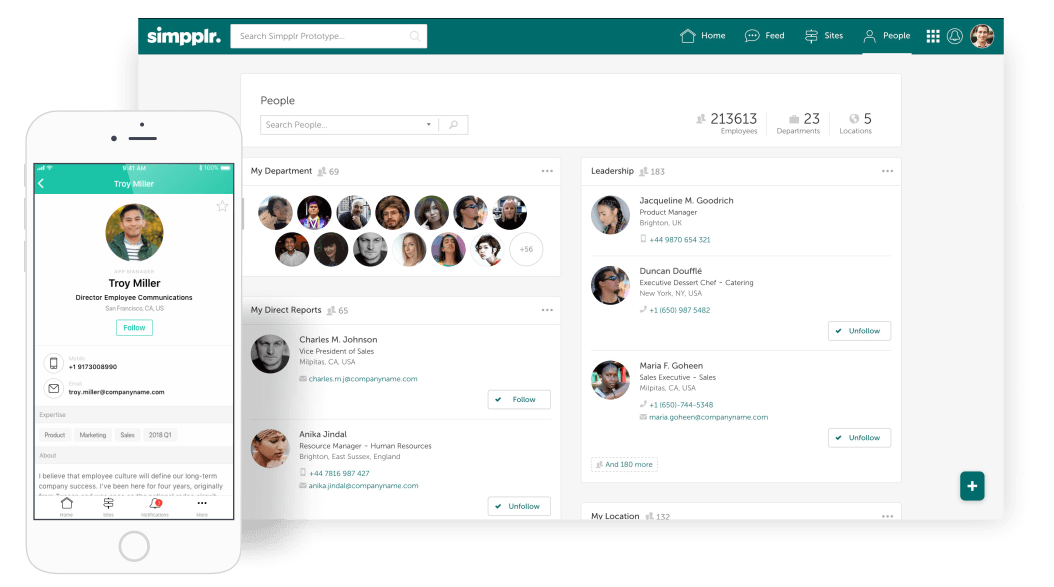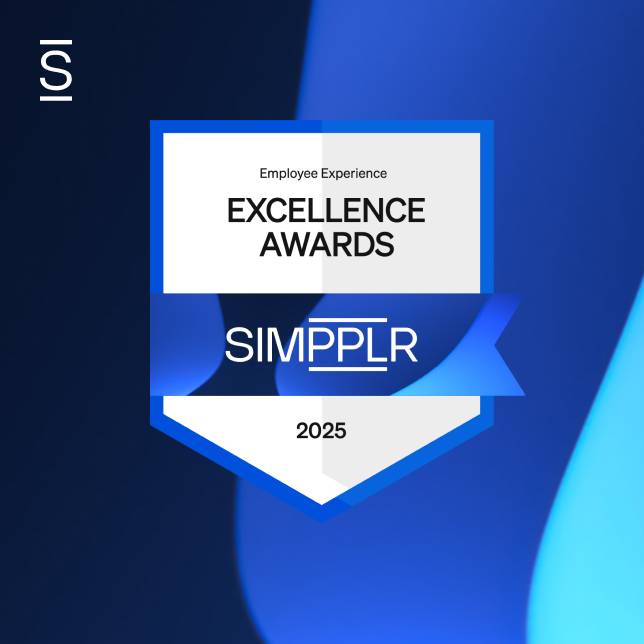The directory of employee profiles is one of the most important and frequently visited features of every social intranet. It’s essential for organizations as well, connecting individuals across locations and enabling teams to work in a more integrated way.

Because people are the most important asset in any organization, we’re sharing six key ways in which employee profiles help staff work better (and smarter):
1. Contact people quickly
At their most basic level, employee profiles must contain authoritative information about a person’s role, location, reporting lines and key contact details. Ideally this information should be derived from a single source (usually the HR system).
Many intranets derive their key HR information from an active directory, which in turn gets information from the HR system. This means your employee directory is an authoritative source of contact data, and users are confident that the information is accurate. As a result, employees can look up the contact details they need confidently and efficiently.
2. Locate experts
In addition to contact details, employee profiles often list a person’s area of expertise, which can often be key subjects an employee is most happy to discuss when chatting with or meeting new coworkers.
Being able to find the right experts is another fundamental strength of employee intranets. Without the employee directory it can be very difficult to find that person who speaks Vietnamese, or knows about the South American 3D Printer market! Previously, experts were located by sending endless emails, but now a quick search on the people directory will bring up the relevant authority instantly. Finding the right experts is critical for answering questions, serving customer needs, building project teams and getting things done.
3. Recognize your co-worker
Have you ever worked with somebody whom you’ve emailed or called on the telephone, but never met face-to-face? This is quite common when two people work in different locations, but it can also happen in the same office! Perhaps you know you’ve been introduced to coworkers before, and you’re on your way to a meeting with them, but can’t quite remember who’s who….
When it finally comes to that moment when you do need to meet, the photo on an employee profile will help put the right name to the right face. No more memory lapses or calling people by the wrong name!
4. Get to know people better
One of the great things about employee profiles is that they give a more rounded view of an employee. A profile not only tells you about a person’s work background, their relative areas of expertise and what they’re involved in, it also has the potential to list hobbies, areas of interest and where else they’ve worked. It could also give you a glimpse into their personality by showing their recent updates made on the social intranet.
Having a more in-depth, 360-degree view of a person can help teams to gel, make working with people more enjoyable and facilitate connections when common interests and experiences are identified. How many times have you worked with somebody for years and then found out they went to the same university as you? Employee profiles help you find out sooner!
5. Show off your credentials
Profiles help employees to promote their skills, credentials and experiences, including those gained from previous roles. They can also help determine projects on which coworkers would like to collaborate or join.
Sometimes talents and backgrounds go unnoticed, as people are often judged on the scope of their current role alone. Having a profile can help employees be appreciated on their whole range of strengths and skills, allowing them to be involved in different projects and participate on assignments they find exciting. It’s amazing, for example, how many people have solid software development experience and a keen interest in the area, but whose official role has a differently focus entirely.
6. Help new hires to assimilate
All of the above reasons really help new hires get up to speed quickly when joining a company. They can connect to new colleagues while showing off their background and areas of expertise. Requiring new hires to fill out and finalize their employee profiles as part of the onboarding process really helps with intranet adoption as well.
Make completing employee profiles a priority
Employee profiles are critical to everyday performance within your organization, while also bringing value to your intranet! Of course, an essential factor for successful and confident usage is that a high proportion of profiles need to be complete.
Tip: When onboarding new hires, add this to the onboarding checklist
It’s worth spending some time to get employees to fill in their respective profiles. There are various tactics to help with this (including highlighting occasional profiles on your homepage), but essentially it’s about communicating the value of employee profiles and how they can help both employees in everyday work.
And as studies have shown, what’s good for employees can have real impact on profit and customer satisfaction.

















